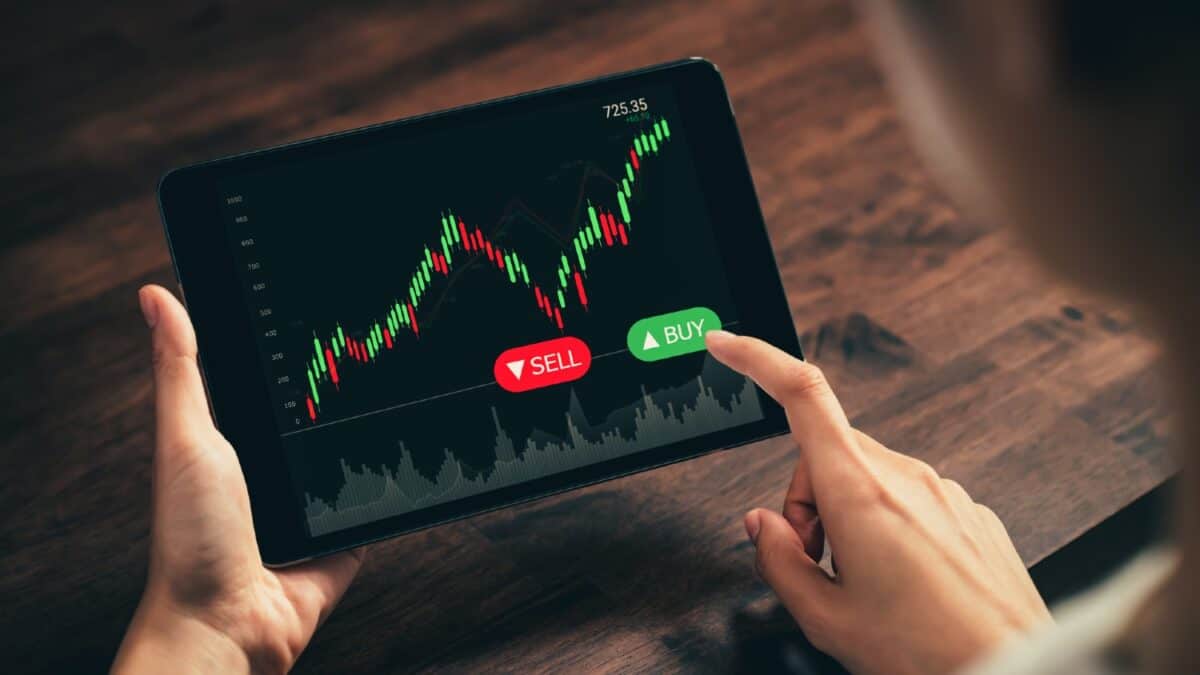Dive Into the Cryptocurrency World: A Comprehensive Analysis of Bitcoin, Ethereum, and Ripple Market Caps
Not sure what crypto market caps mean? Do not be afraid! This guide breaks down market cap in simple words, looks at how it affects things, and answers all of your hot questions. You can confidently move through the crypto world and make smart financial choices.

In the ever-expanding universe of digital currencies, market capitalization serves as a vital yardstick for assessing a cryptocurrency's size, growth, and influence. This guide delves deep into the market caps of the three major players in the cryptocurrency space: Bitcoin, Ethereum, and Ripple. We'll explore how market cap is calculated and why it matters and provide a snapshot of the current standings of these digital assets in the marketplace.
|
Table of content |
What is Market Capitalization in the Crypto Space?
Market capitalization, often referred to as market cap, gives you a quick assessment of a company's or cryptocurrency's size. It's simply the current market price of an asset multiplied by the total number of assets in circulation. For cryptocurrencies, it's a measure that gives a rough estimation of their dominance and provides a perspective on how much investment has flowed into them.
For potential investors and analysts, the market cap indicates the crypto's health and attractiveness. A high market cap means many users, coins in circulation, or a high price per coin. But market cap alone doesn't tell the whole story; you must analyze it alongside other metrics like trading volume, liquidity, and historical price performance.
Understanding Cryptocurrency Market Cap in Depth
How is Market Cap Calculated for Cryptocurrencies?
Market Cap = Current Price x Circulating Supply
To gain a better understanding of what constitutes market cap, let's break down the formula's elements:
- Current Price: This is the last transaction price at which the cryptocurrency was sold.
- Circulating Supply: The number of publicly available coins circulating in the market.
Multiplying these two gives the total market capitalization of the cryptocurrency.
Why Market Capitalization Matters
Market capitalization is a critical aspect of cryptocurrency assessment for several reasons. Principally, it strongly indicates the market's perception of a cryptocurrency's future prospects. High market cap cryptocurrencies are perceived as more stable and less prone to drastic market volatility than smaller cap cryptos. It's a metric that can influence investor confidence, either attracting more investment and usage when it increases or signalling potential issues if it decreases persistently.
Furthermore, comparing the market caps of different cryptocurrencies provides insight into competitive positioning within the market. For example, Bitcoin's market cap, compared to that of altcoins like Ethereum and Ripple, can give investors a sense of how diversified the market is and where new technological or market developments might emerge.
However, it is also essential to remember that market cap is not the definitive measure of value. It does not account for the number of coins lost or inaccessible, nor does it directly tie to the actual liquidity available in the market. Therefore, while market cap provides a useful high-level overview, it is most effective with other indicators.
Why is Market Cap Important in the Cryptocurrency Market?
Market cap is a critical metric in the cryptocurrency space for several reasons:
- Investment Attraction: It provides a rough indicator of a cryptocurrency's attractiveness as an investment. A high market cap usually suggests low volatility and stability.
- Trading Liquidity: A high market cap usually means the cryptocurrency has high trading volumes, making it more liquid and more accessible for investors to buy and sell.
- Resistance to Manipulation: Cryptocurrencies with large market caps are less susceptible to price manipulation than those with smaller market caps due to a wide distribution and large investor base.
- Comparison Metric: It's used to compare cryptocurrencies with one another or to measure a specific crypto against the global crypto market.
Snapshot of Market Caps of Leading Cryptocurrencies
Let's take a closer look at the market caps of Bitcoin, Ethereum, and Ripple, three of the world's most notable cryptocurrencies today.
Bitcoin: The Giant Among Cryptos
Bitcoin, the pioneer of cryptocurrencies, has the largest market cap in the world. Launched in 2009, it provides the blueprint for decentralized digital currencies. As of [current date], the market cap of Bitcoin stands at [current value], with over [circulating supply] in circulation. Bitcoin has seen unparalleled adoption, with thousands of businesses across the globe accepting it as a form of payment.
Ethereum: The Smart Contract Enabler
As of [current date], Ethereum's market cap has surged, making it the second-largest cryptocurrency. With a distinctive technological protocol that allows developers to build smart contracts, Ethereum's current market cap is [current value], with a circulating supply of [total coins in circulation]. The platform has numerous decentralized applications and a vibrant developer community.
Ripple: The Bankers' Choice
Ripple, designed for fast and cost-efficient payment settlements, boasts a current market cap of [current value] and a circulating supply of [total coins in circulation]. It's often championed by those within the traditional banking and finance sectors due to its utility in cross-border remittances.
Comparative Market Caps Analysis
Now, let's analyze the market caps of these cryptocurrencies against each other and the global crypto market.
Bitcoin vs. Ethereum: A Tale of Two Titans
The market cap of Ethereum has been marching upward, challenging Bitcoin's dominance. Ethereum's market cap surge is primarily attributed to its role as the backbone for various DeFi projects and NFT platforms. While Bitcoin maintains its lead, Ethereum's growth signifies an evolving crypto landscape, with investors moving beyond digital gold to platforms with broader applications.
Ripple's Market Cap in the Payment Sector
Though Ripple competes in the same space as Bitcoin and Ethereum—digital payment and transactions—its approach and implementation cater specifically to the traditional financial industry. As such, its market cap reflects the demand and trust of banking institutions.
Benchmarking Against the Global Crypto Market
To provide context, assessing the combined market caps of Bitcoin, Ethereum, and Ripple against the total market cap of all cryptocurrencies gives a view of their relative strength and importance within the ecosystem. As of [current date], the combined market cap of these three cryptocurrencies stands at [combined value], which represents [proportion of the total market cap]% of the entire cryptocurrency market.
FAQ
Q: Is market cap a good measure of a cryptocurrency's future potential?
A: It's one of many factors to consider. A high market cap can signify stability, but minor market cap currencies have more room for growth.
Q: How often does market cap change?
A: The market cap of cryptocurrencies can change constantly as the prices and circulating supplies fluctuate. It's updated in real-time on cryptocurrency exchanges and market tracking websites.
Q: Why do cryptocurrencies with smaller market caps have higher percentage gains?
A: Smaller market cap cryptocurrencies are generally more volatile due to their limited liquidity; hence, they can have higher percentage gains.
Q: Can market cap be manipulated?
A: It's possible to manipulate a smaller cryptocurrency's market cap coordinately. However, more prominent cryptocurrencies resist such attempts due to their large investor bases and higher trading volumes.
Q: Which market cap collaborations have the most extensive impact on the global market?
A: Collaborations that harness the combined strengths of these cryptocurrencies have the potential to reshape the global crypto market.
Conclusion
Understanding market capitalization is essential for investors, businesses, and enthusiasts in the dynamic world of cryptocurrencies. The market caps of Bitcoin, Ethereum, and Ripple reflect not just their business models and usability but also the evolving market trends and investor sentiment. As digital currencies mature, market cap will remain a key metric, providing insights into the depth and value of the crypto assets that power this burgeoning sector. So keep an eye on the market caps of your favourite cryptocurrencies—they may hold the key to their future success. So, it's crucial to regularly monitor and analyze the market caps of various cryptocurrencies to stay informed about their performance and potential. With new cryptocurrencies constantly emerging, it will be interesting to see how the cryptocurrency market evolves regarding market capitalization in the coming years. Remember to research and make informed decisions before investing in any cryptocurrency. Happy investing! So, keep exploring the ever-changing world of cryptocurrencies and stay updated on market caps to understand the crypto ecosystem better. The future is uncertain, but you can confidently navigate it with knowledge and understanding of market capitalization.
What's Your Reaction?

























































